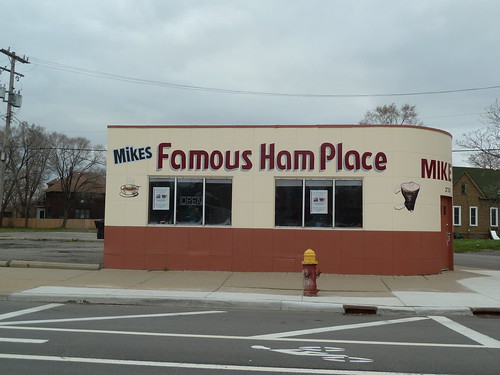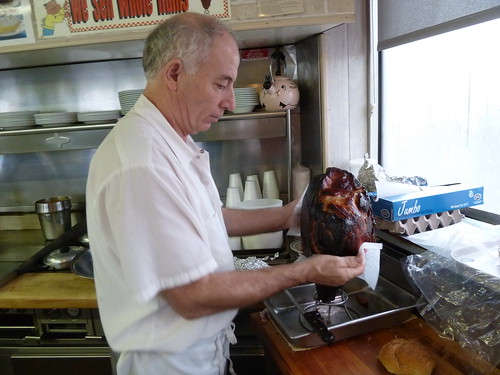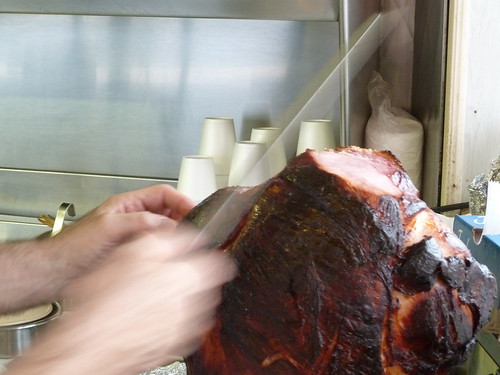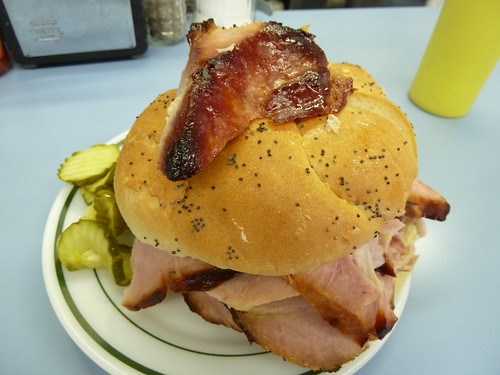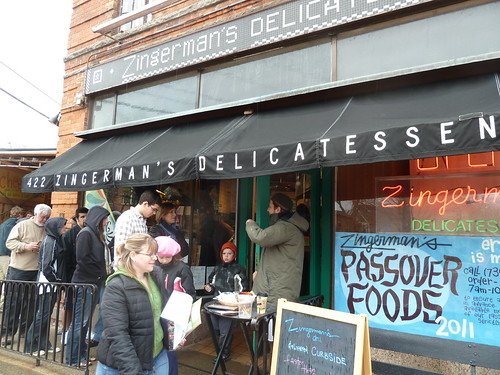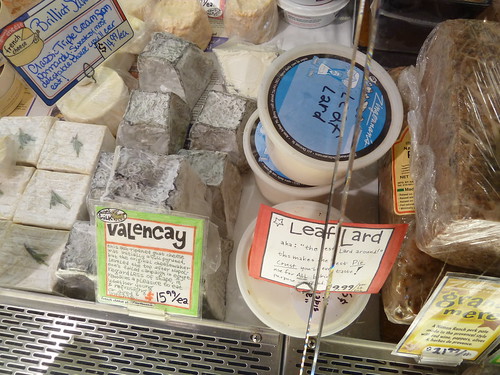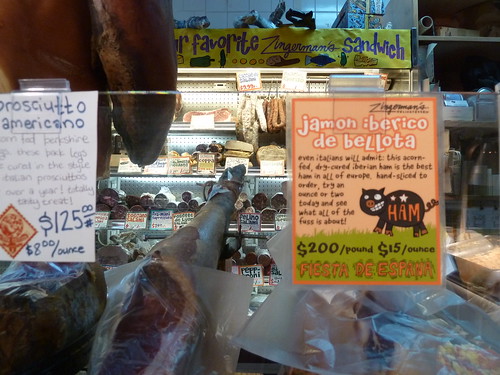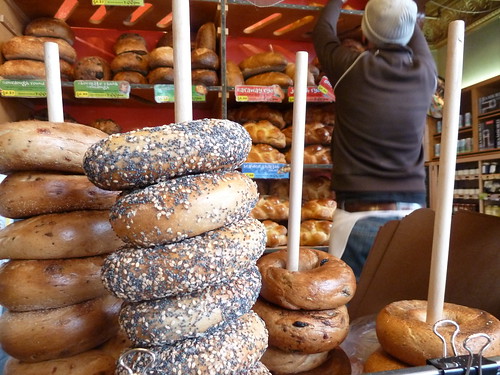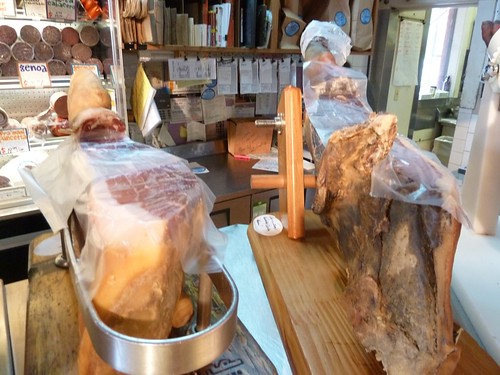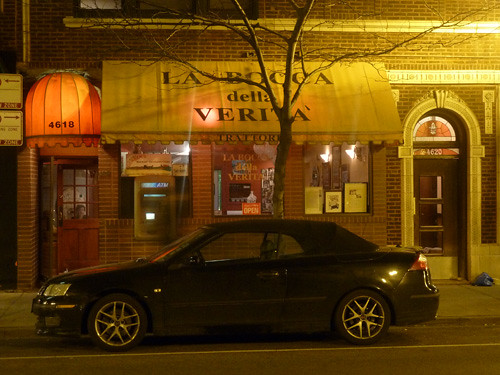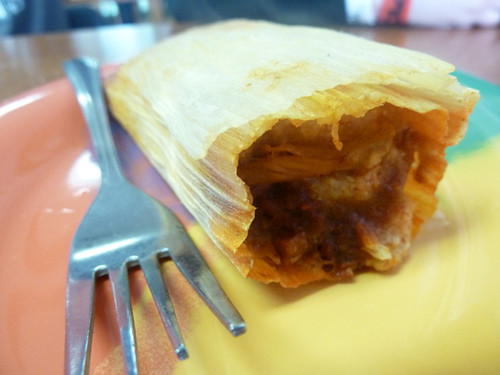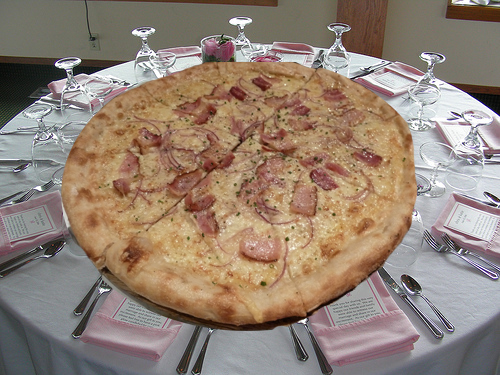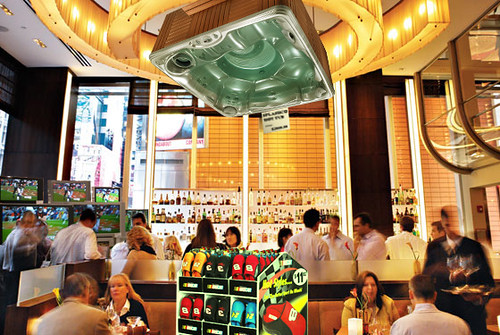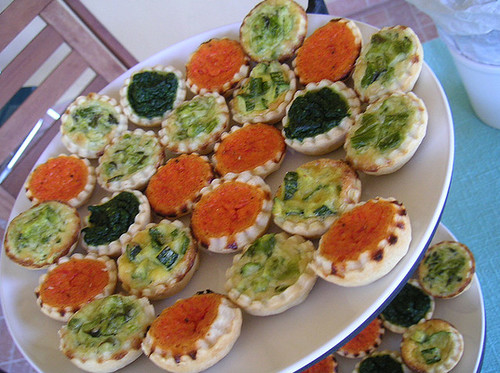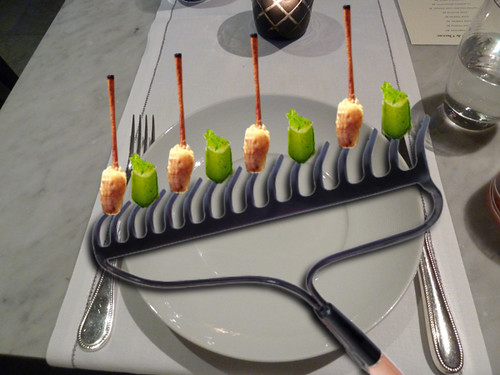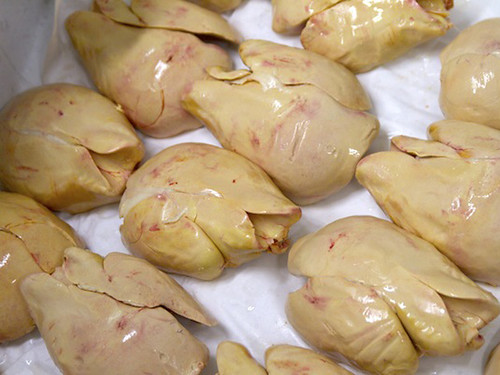ANNOUNCEMENT FIRST: I will be giving a talk on food as depicted in films of the Depression as part of the Greater Midwest Foodways Association’s Foodways of the Great Depression conference, Friday at 4 at Kendall College. More information here.
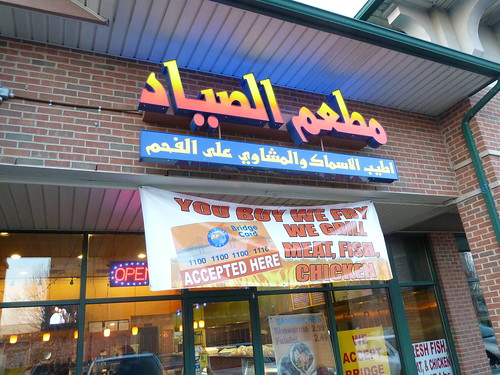
Assayad.
I have a certain knack for blundering into trouble spots— I managed to have business in LA for both O.J. verdicts, and don’t even get me started about the vacation we took when I was a kid to the Bay of Pigs— so it’s not surprising that my first trip to Dearborn, Michigan that paid any attention to the town itself (I’d been to the Henry Ford Museum/Greenfield Village before, but ignored its surroundings) should occur on the very same day as a supposed preacher threatening to burn Korans (thus torching Christianity), Muslims threatening to riot (thus torching their own community), and a prosecutor and judge enforcing a blatantly illegal example of prior restraint (thus torching the U.S. Constitution). As a result, the Dearborn I visited was a powderkeg about to explode.
And I’m Queen Noor of Jordan.
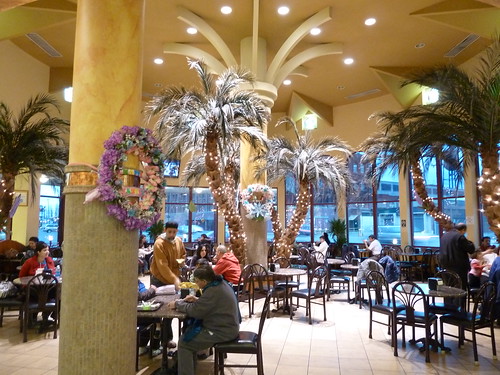
Shatila Bakery.
Seriously, it was impossible to reconcile what the nervous nellies on TV were saying with the place that I was actually in. I ate dinner twice on the Arab-American commercial strip along Warren Ave., and it was many things— booming, thriving, vibrant, lively— but likely to explode in trouble was not one of them. Dearborn’s middle-eastern strip is inspiring, it makes Chicago’s look like a strip mall with a 7-11 and a Family Pride cleaners. There are literally dozens of places, from little holes in the wall to lavishly glitzy spots that look like they belong in a mall in the Emirates or Dubai, and to judge by the signage, more are opening all the time. And they were full of life and activity, families dressed up and out for dinner or ice cream, women in headscarves shouting over countertops to clamoring customers. The funny thing to think is that, most likely, much of the non-Arab population barely knows this all exists; straight west of where we stayed, on Michigan Avenue, there’s a standard suburban strip with things like Buddy’s Pizza, which may have been good Sicilian-style square pizza in 1946 but is mall-standard Pizza Hut-style pan today. Warren Ave.’s ferment of middle eastern entrepreneurial activity was as much an alternative universe to that generic present day reality as Henry Ford’s idealized 1900s small town full of inventors is.

Peter Engler, who’s made some study of Detroit (but leaning more toward coneydogology), advised me that there were a number of older Chowhound threads about the area, and that led me to our first stop, a bakery and deli called New Yasmeen, which had been recommended in a Saveur article c. 2004 for offering Iraqi stews not otherwise seen in North America.
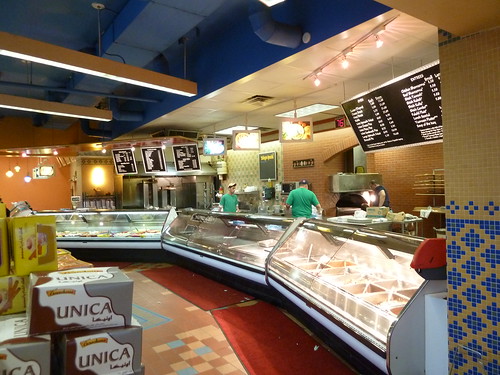
I’m intrigued by any dish at a middle eastern place that is outside the ordinary and universal menu of shish kabob-shish taouk-hummus, so I zeroed in on some stews toward the end and started asking about them, one in particular with a whitish cast which I suspected, correctly, to be a yogurt base. I tried to order it, the guy helping me hesitated, I insisted— and then a manager who looked like Armin Mueller-Stahl came over and pronounced: “It is not good.”
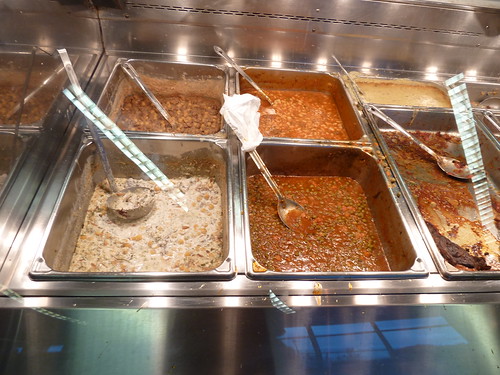
I haven’t been whited like that in years, so when I still appeared undaunted, the first guy finally offered me a (quite generous) taste. It was fine! It tasted tart, like yogurt. On behalf of my fellow Nordic European-Americans, I’m sorry if any of my fellows came in here, tried these more exotic dishes, and bitched about them. We ordered a wide variety of things and they were all perfectly decent examples of their types, good spinach pie, nice lemony hummus light on the tahini, though really, the only reason to make a special trip here is if you want to try things you won’t see anywhere else.
Afterwards we went a few doors down to a place Peter had mentioned— or rather, the much glitzier new home of Shatila Bakery:
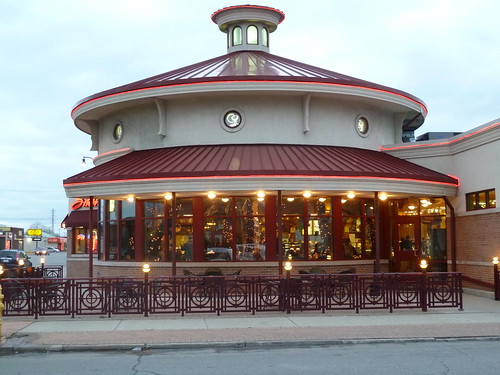
This was like a food court of middle eastern goodies, with separate counters for middle eastern pastries like baklava, French pastries (including a few hybrids like zatar-flavored croissants), ice cream and even a counter devoted entirely to knafeh, the dessert of gooey white cheese covered with orange-dyed shredded wheat, then doused with a sugary syrup:

While my wife got us the coconut ice cream (which came highly recommended and was, indeed, wonderful, jam-packed full of coconut), I went to get a few of the middle eastern pastries to try. But I was quickly advised that at the per-piece price, I’d spend a fortune, and so the headscarf-clad young lady spent ten minutes assembling me a beautiful boxed assortment of the good stuff for about the same price. They were delicate and fresh, far better than the musty old examples you often find here. While all around us, families laughed and ate ice cream and baklava. I wanted to wake Henry Ford from his eternal rest and tell him— “Here! This is the ice cream parlor your perfect small American town needs now! It will fit right in!”
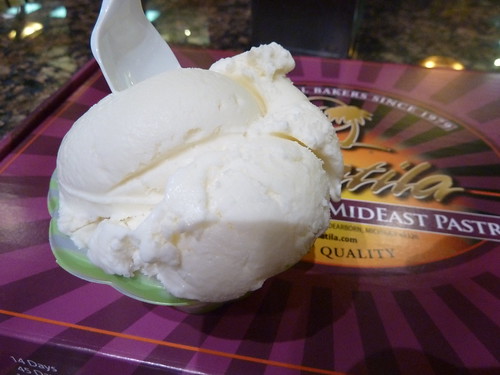
On my way out I did a little scouting for the next day but in the end, the kids rebelled against middle eastern two nights in a row and I sent the rest of the family off to Buddy’s Pizza (which is why I can have an opinion on it). Instead, I beelined for a place advertising meat grilled over live coals, something I’ve seen only once in Chicago, at Al-Bawadi:
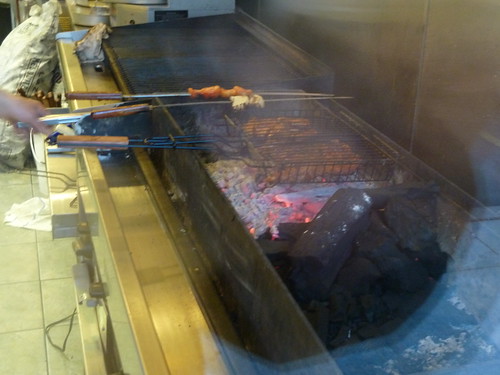

The place was called Assayad, it had touches of a curiously nautical theme, and everything I had, from the pickles
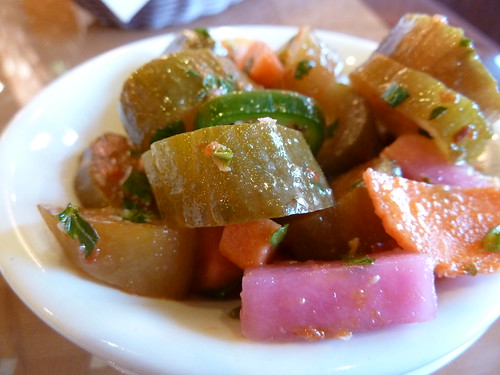
to the fattoush salad and hummus

was unusually bright and freshly-flavored, probably better than their equivalents anywhere in Chicago.
But what about the charcoal-grilled meats? I ordered kufta kebab (getting whited again, with the waiter saying “Shish kebab?” and me having to reply, firmly, “No, kufta kebab”) and it was kufta kebab kissed with a little of the smokiness of a Polish sausage. Even better, it was laying on a piece of very thin flatbread shmeared with muhammara, red pepper puree. It was great. If I’d had more people than myself, I’d have explored more of the menu— a section on fish casseroles looks intriguing— but for a first visit, this left me completely happy for a total that returned change from a $20.
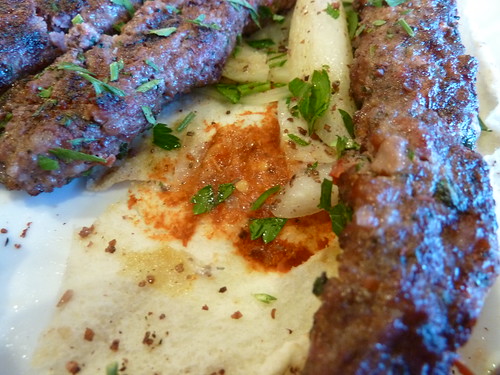
So now I’ve definitely got a recommendation for travelers in Assayad that’s newer than a Saveur article in 2004. But even moreso, my recommendation would be to keep exploring, the scene is so big and varied and vibrant that I have no doubt there are many more exceptional things to be discovered here, and together they constitute a booming commercial sector that leaves Chicago’s small pockets of middle-eastern in the dust (even though Dearborn’s total Arab-American population of around 30,000 is less than a quarter of Chicago’s). There’s nothing like it here— although, curiously, I notice that Assayad’s menu claims that it has a few other outposts including in Clifton, New Jersey, Houston… and Chicago. I can’t find any trace of an Assayad branch here, and so far as I know Al-Bawadi remains the only charcoal-grill middle-eastern restaurant in town. But who knows?
New Yasmeen Bakery
13900 W Warren Ave
Dearborn, MI 48126
(313) 582-6035
Shatila Bakery
14300 W. Warren Ave
Dearborn, MI 48126
(313) 582-1952
Assayad
14246 W Warren
Dearborn, MI 48126
(313) 908-7807


 Posted in
Posted in 

